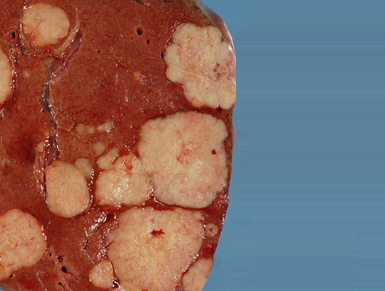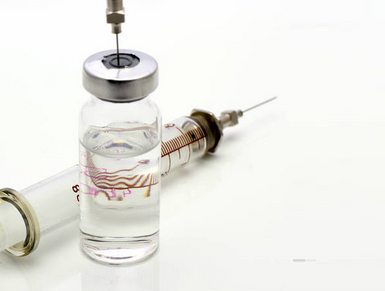DOI: 10.13140/RG.2.1.1180.9521
Authors: Isabela Maia Diniz; Lívia Lovato Pires de Lemos; Isabella Piassi Godói; Marina Morgado Garcia; Gustavo Simões Santos Leal; Juliana Alvares; Alessandra Maciel; Renata C. R. Macedo do Nascimento; Rodrigo Kleinpaul; Francisco de Assis Acúrcio; Augusto Afonso Guerra Júnior
ABSTRACT
Strength of Recommendations: Strong against technology
Technology: Beta interferon 1a 30 ug intramuscularly once a week (βIFN-1a-30μg-IM).
Indication: Treatment of patients with Multiple Sclerosis.
Technology Characterization: The beta interferon 1a 30 ug is a cytokine capable of binding to specific receptors on the cell surface and enable antiviral activity, antiproliferative and immunomodulatory. It is applied once per week intramuscularly.
Question: βIFN-1a-30μg-IM is as effective and safe as the other βIFN also provided by the National Health System, which are the betainterferonas first 22:44 ug subcutaneous three times a week (βIFN-1a-22μg-SC and βIFN-1a-44μg-SC) and betainteferona 1b subcutaneous 300 ug of 48 in 48 hours (βIFN-1a-300μg-SC)?
Search and analysis of scientific evidence: The databases were searched The Cochrane Library (via Bireme), Medline (via PubMed), LILACS and Centre for Reviews and Dissemination (CRD). Systematic reviews of randomized controlled trials, randomized controlled trials and cohort studies on the efficacy, effectiveness and safety of βIFN in the treatment of patients with multiple sclerosis were included. Cross-sectional studies were considered eligible due to lack of adhesion results in cohort studies. Randomized clinical trials and systematic reviews were evaluated according to the GRADE system and observational studies according to the parameters of Newcastle-Ottawa. Also sought is for health technology assessments (HTA) and therapeutic guidelines on websites of the National Commission on Technology Incorporation in SUS (CONITEC) and international agencies. The cost of monthly treatment was calculated considering the doses recommended by the Clinical Protocol and Therapeutic Guidelines for Multiple Sclerosis of the Ministry of Health (2015) and the Maximum Price of Sale to the Government of the Pharmaceutical Market Regulation Chamber of the National Health Surveillance Agency.
Summary of results of selected studies: We included three systematic reviews were included five randomized clinical trials, thirteen prospective cohort studies and two cross-sectional studies. βIFN-1a-22 / 44μg-SC and βIFN-1a-300μg-SC were higher than the βIFN-1a-30μg-IM for the relapse rate outcomes, change in Expanded Disability Scale Status (EDSS) and evaluation of brain injuries by MRI. safety results favored the use of βIFN-1a-30μg-IM, except for the occurrence of flu symptoms. These results were obtained from systematic reviews, randomized controlled trials and cohort studies. Observational studies revealed greater adherence to βIFN-1a-30μg-IM compared to other immunomodulators (betainterferonas and glatiramer), although some results do not show statistical significance between the control and intervention groups. Monitoring of patients in one of the cross-sectional studies revealed no difference between the medicines as the membership in the month prior to the interview, after two years of follow-up. The quality of systematic reviews ranged from moderate to high, clinical trials of low to moderate and observational studies from low to high. Most of the studies were funded by pharmaceutical companies. The estimated DOI: 10.13140/RG.2.1.1180.9521 cost of monthly treatment was R $ 4,600.80; R $ 7,676.31; R $ 8,733.11; R $ 4,851.53 for βIFN-1a-30μg-IM, βIFN-1a-22μg-SC, βIFN-1a-44μg-SC and βIFN-1a-300μg-SC, respectively.
Recommendations: The inferiority of βIFN-1a-30μg-IM against other betainterferonas does not compensate in clinical terms, the convenience of one application per week and its lower cost, since the goal of treatment of MS is to reduce the occurrence of outbreaks and thus slow the progression of the disease. Therefore, in view of the effectiveness of the treatment, the existence of therapeutic alternatives that have better relationship between cost and effectiveness and, above all, the expected benefits for patients, it is recommended a review of the Clinical Protocol and Multiple Sclerosis Therapeutic Guidelines System single Health. it is also recommended wide dissemination among the professionals involved in the treatment and patients of the reasons that led to whatever changes the PCDT, to ensure transparency and to give everyone the assurance that there will be no losses for users of SUS.
* Full content in Portuguese
































Adicionar Comentário